Inspire your elementary students to love poetry and compose their own poems with these simple and fun activities.

This article contains affiliate links to things that you might like.
The “Listen Then Try” Method
Children need exposure to poems of all styles (funny, heartfelt, and descriptive) and types (including kinds that rhyme, have meter, or are free verse).
How else will they fall in love with poetry or at least develop an appreciation for it?
How will they be inspired to compose their own poems?
When children hear poetry, they develop an ear for it.
Their brains adapt to the meter, verse, sounds, and images of poetry.
When you introduce poetry, you want to expose young learners to what’s possible, and that will give them a template to follow to create their own poems.
Whether you focus on specific children’s poets or only on poetry type, letting students hear different types of poems helps them develop an appreciation (and understanding!) for how poetry works.
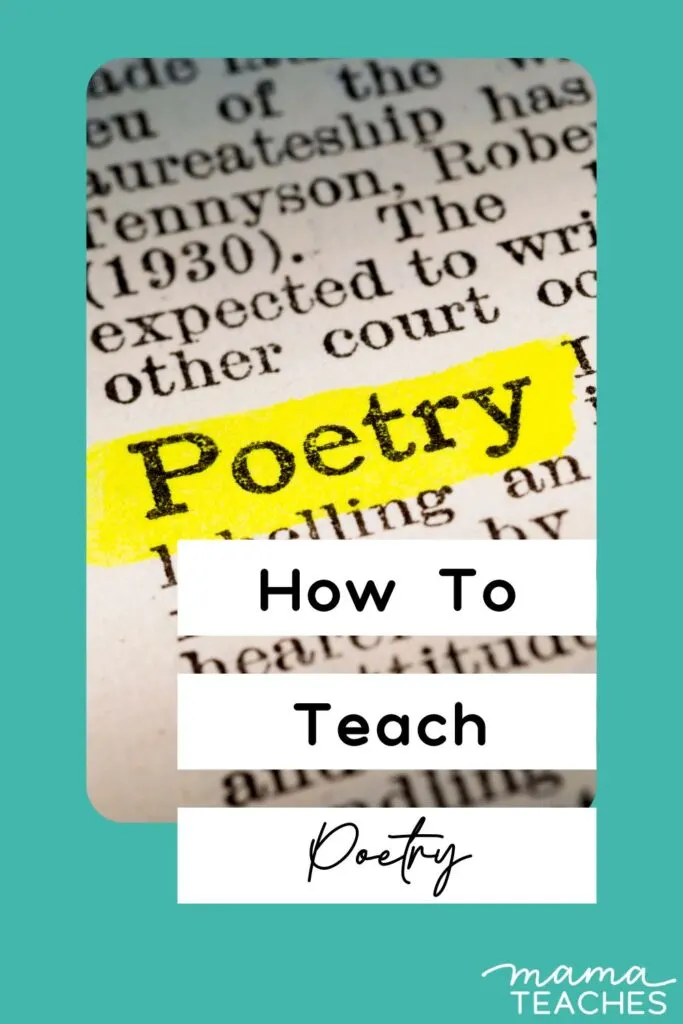
Different Types of Poems
Poetry is a whole genre of literature, with so many varieties and forms.
With young listeners, keep poems short and appealing.
Still wondering how to teach poetry?
Try these types of poems.
Shape Poems
Shape poems (also called calligrams) are a bridge between art and poetry.
The words themselves are arranged to form a picture, and the words all contribute to a single idea or prompt.
A simple image search will unearth a treasure trove of shape poem examples.
Kenning
Stemming from Old Norse poetry (Beowulf, anyone?), a kenning is two words paired together to stand for a particular noun.
For example, “Jelly shaker” might be a name for Santa, or “Dolphin road” could be a name for the sea.
You can use kennings in any type of poem, or compile a list of them to describe a central topic.
You can find a selection of kenning poems online.
Here’s one:
Who Am I?
Nonsense babbler
Shrill shrieker
Drool dribbler
Cuddle warmer
Angel sleeper
(Answer: a baby)
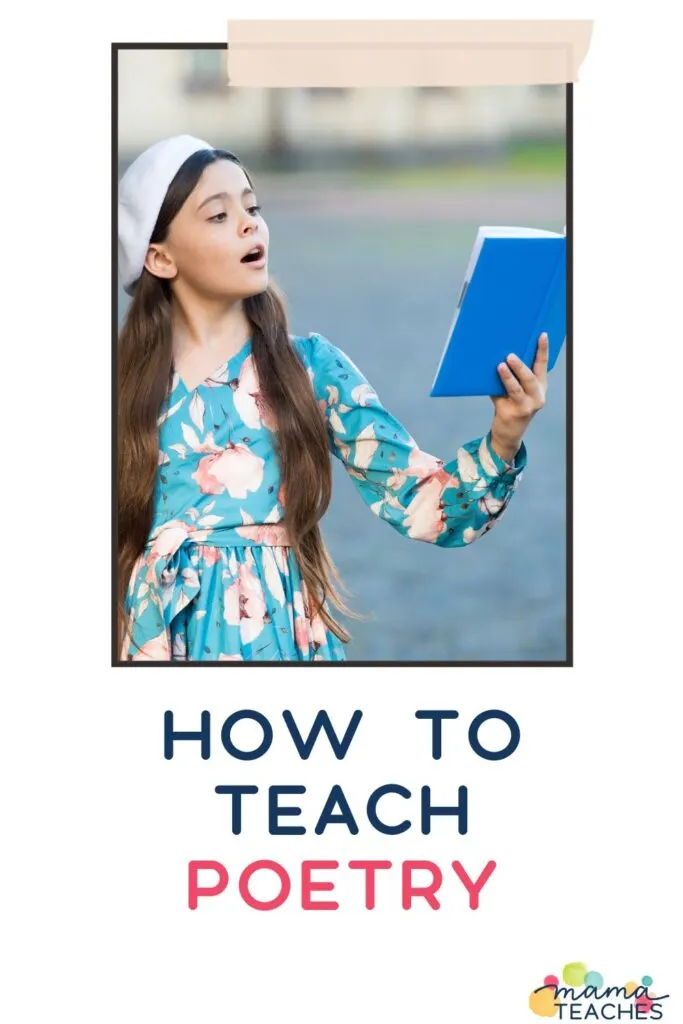
Haiku
A traditional Japanese poem about nature, a haiku has only three lines.
The first line is 5 syllables, the second line is 7 syllables, and the third line is 5 syllables.
You can find great examples of haiku in My First Book of Haiku Poems.
Limerick
Limericks are lighthearted, funny poems that follow an AABBA rhyme scheme.
Edward Lear was the limerick-writing master.
You can find selections of his limerick for kids in this book, appropriately titled Limericks for Kids.
Narrative Poetry
Poems can tell a story; that’s the essence of narrative poetry.
It doesn’t have to be super long (like the Odyssey).
It can relate a simple occurrence.
Some classic examples of narrative poetry for kids are “The Three Little Kittens” nursey rhyme and pretty much anything by Shel Silverstein in Where the Sidewalk Ends.
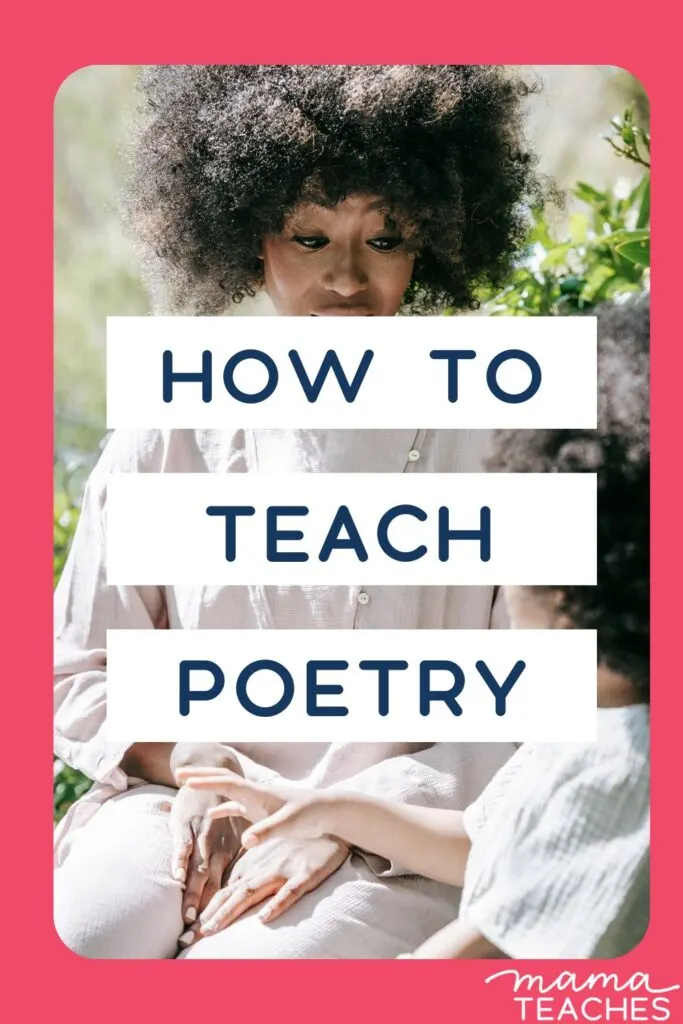
Acrostic Poem
In an acrostic poem, every line of poetry starts with a letter that vertically spells a word.
For example, in this poem you can see the word ICE.
Inching from the rooftop
Crystal carrots cling to the gutters
Everyone waits for the icicles to melt–or shatter
Lewis Carroll wrote a poem entitled “Acrostic” for the three little girls of a friend (he wrote Alice in Wonderland for these same girls).
The acrostic spells their names: Lorina, Alice, and Edith.
Didactic Cinquain
This five-line poem has an intimidating name but a simple structure that is easy to imitate.
Line 1: 1 word topic
Line 2: 2 adjectives that describe the topic
Line 3: Three -ing words
Line 4: 4 word phrase or feeling
Line 5: 1 word synonym for the noun
Here’s an example:
Popcorn
Buttery, light
Jumping, Flinging, Popping
A whirlwind of energy sprinkled with salt
Snackfood

Fun Activities for Teaching Poetry
Now that your students know what each of the types of poems are, they are ready to try their own.
Drum Haiku
Children have a hard time hearing syllables at first.
Once you have taught them about syllables, you can help them compose a haiku.
Bring in nature pictures (cutouts from magazines or calendars work well).
Have them study a picture and write words that describe it.
Then they can string the words together to form lines with the 5-7-5 pattern.
To test their haiku, they can play the drum (or clap together two drumsticks), one syllable per beat.
Die Cut Shape Poem
Pick an object and cut out the object’s shape (I like to use a die cutter).
Have students brainstorm words they associate with their object.
Then as a rough draft, they can arrange the words in various sizes inside the shape cut out.
Then trace the shape onto a piece of plain paper.
Now they are ready to fill in their final version.
As an alternative, they can write the words along the outline of the shape (as opposed to filling it in with words).
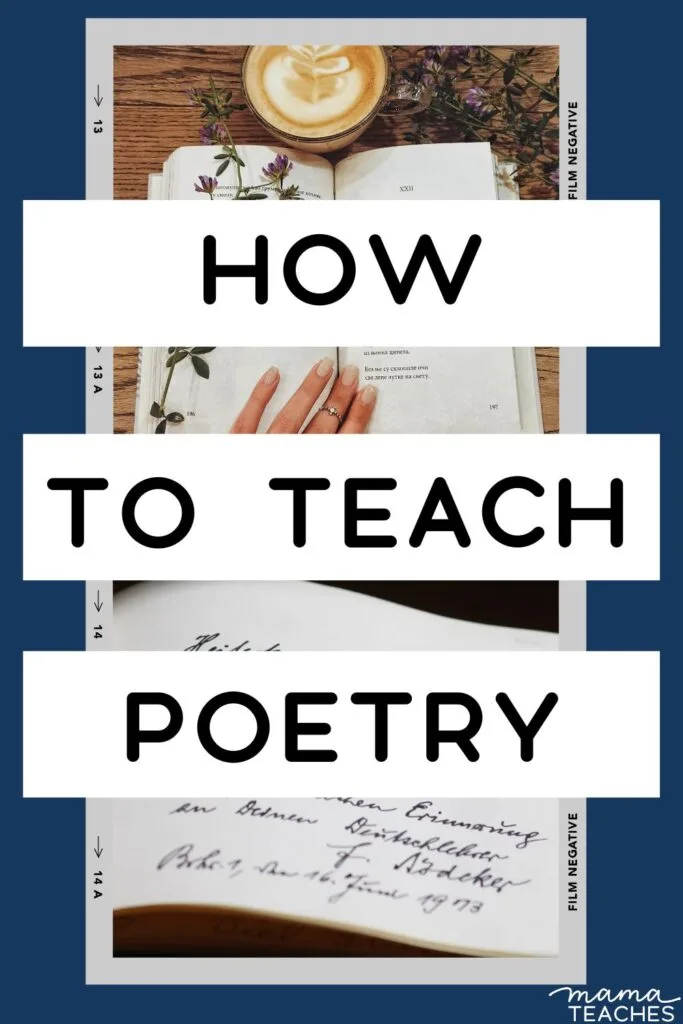
Kenning Tribute
Who is someone your students admire?
Write a tribute kenning poem about them.
I like to use a graphic organizer for this project which includes the prompts and has fill-in-the-blanks.
Then they can copy the final draft onto a separate piece of paper.
Another kenning poem idea?
Write a mystery “Who Am I?” poem about characters from stories you have read in class.
You can have fun guessing the mystery character.
Color Limerick
Kids love limericks, but they can be tricky to compose.
Give them a few sets of rhyming words they can use in their limerick (e.g., “cat, bat, sat, rat,” “play, day, way, say, pay,” “man, plan, ran, can, Dan, pan,” and “dog, fog, log, frog, hog”).
Print each set of words in red, yellow, green, or blue.
Tell them they can use two colors to make their limericks.
Have them arrange the words in a color pattern that mirrors the AABBA rhyme pattern.
Once they have their ending words, they can make a little story to form the limerick.
For example, if their red list is “cat, bat, sat, rat” and their yellow list “play, day, way, say, pay,” they can arrange the words like this:
cat (red)
bat (red)
day (yellow)
say (yellow)
rat (red)
Simply add words to the front to make a story limerick:
There once was a very fat cat
Who decided to tease a black bat
The very next day
He decided to say
“You have very strange arms for a bat.”
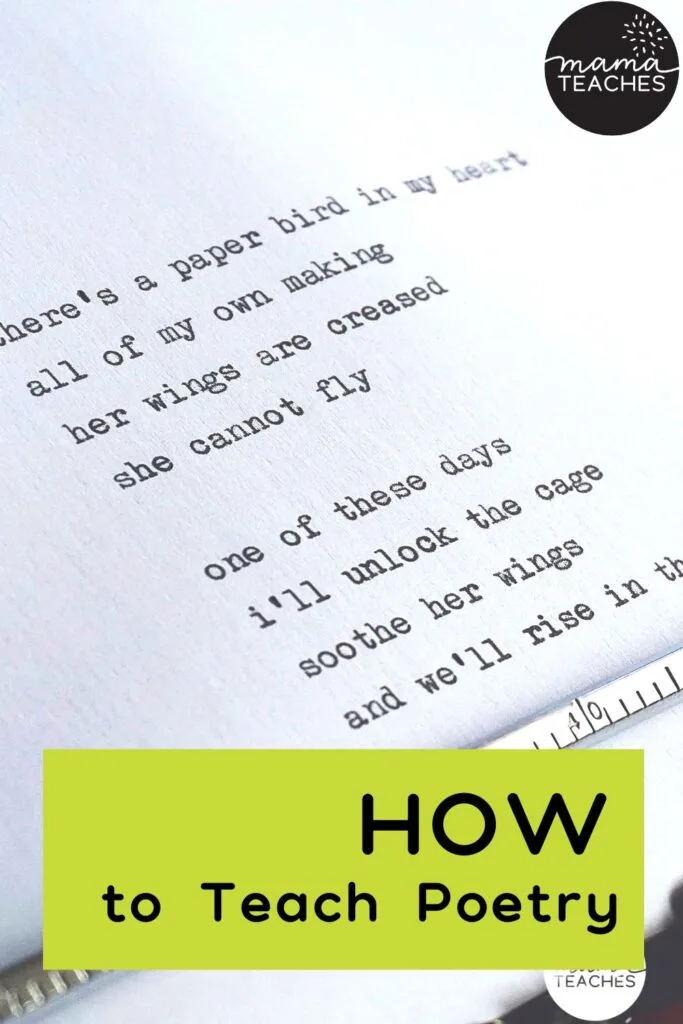
Narrative Poetry
Fill out a story sequence chart with setting, plot, and characters.
Try to keep it as simple as possible.
Something as simple as this:
Characters: myself
Setting: My messy room
Problem: I can’t find my lucky socks
Resolution: I found them. My dog was chewing them under the bed.
Then tell the story as a poem. It does not have to rhyme!
Name Acrostic Poem
Write a poem about yourself using your name as the letters of the acrostic.
Cinquain of the Seasons
Pick a season and go through the format of a didactic cinquain.
Make a graphic organizer the student can follow or fill in.

How to Teach Poetry to Elementary Students
Now you know the secrets of how to teach poetry to young students.
Give them plenty of examples of poems, introduce fun and simple types of poems, and give them all the helps and supports they need to craft their own.
